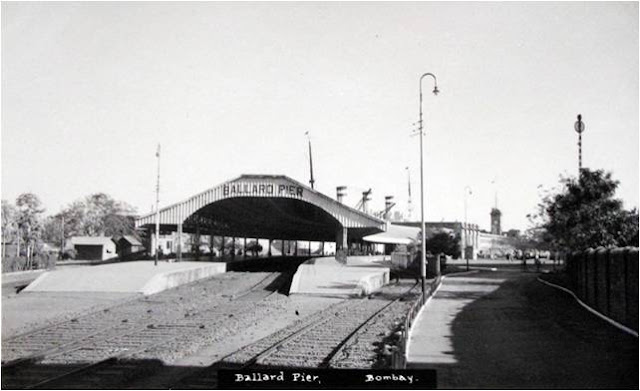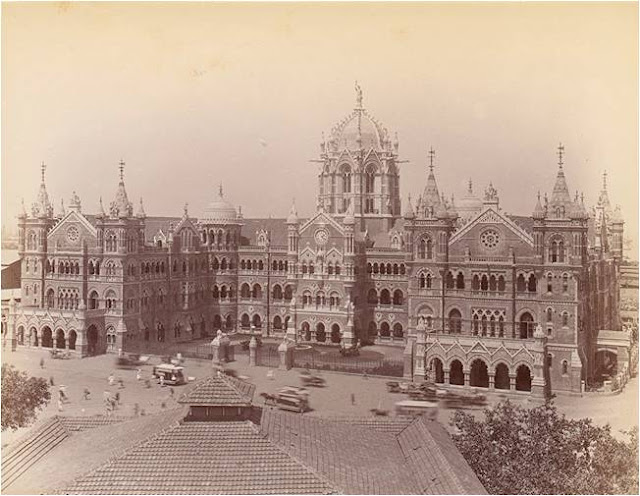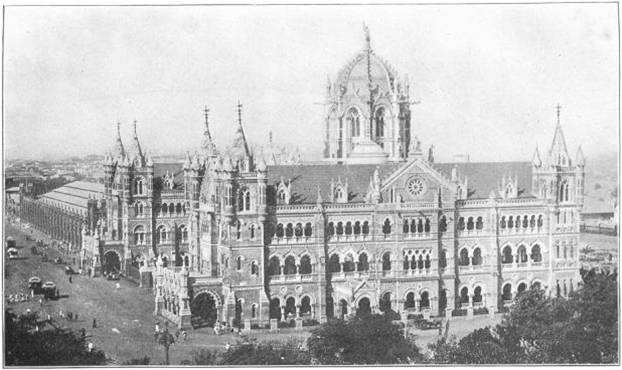India’s history and culture is dynamic, spanning back to the beginning of human civilization. It begins with a mysterious culture along the Indus River and in farming communities in the southern lands of India. The history of India is punctuated by constant integration of migrating people with the diverse cultures that surround India. Available evidence suggests that the use of iron, copper and other metals was widely prevalent in the Indian sub-continent at a fairly early period, which is indicative of the progress that this part of the world had made. By the end of the fourth millennium BC, India had emerged as a region of highly developed civilization.
The Indus Valley Civilization
The History of India begins with the birth of the Indus Valley Civilization, more precisely known as Harappan Civilization.
 |
| Harappa |
It flourished around 2,500 BC, in the western part of South Asia, what today is Pakistan and Western India. The Indus Valley was home to the largest of the four ancient urban civilizations of Egypt, Mesopotamia, India and China. Nothing was known about this civilization till 1920s when the Archaeological Department of India carried out excavations in the Indus valley wherein the ruins of the two old cities, viz. Mohenjodaro and Harappa were unearthed. The ruins of buildings and other things like household articles, weapons of war, gold and silver ornaments, seals, toys, pottery wares, etc., show that some four to five thousand years ago a highly developed Civilization flourished in this region.
The Indus valley civilization was basically an urban civilization and the people lived in well-planned and well-built towns, which were also the centers for trade. The ruins of Mohenjodaro and Harappa show that these were magnificent merchant cities-well planned, scientifically laid, and well looked after. They had wide roads and a well-developed drainage system. The houses were made of baked bricks and had two or more storeys.
The highly civilized Harappans knew the art of growing cereals, and wheat and barley constituted their staple food. They consumed vegetables and fruits and ate mutton, pork and eggs as well. Evidences also show that they wore cotton as well as woolen garments.
By 1500 BC, the Harappan culture came to an end. Among various causes ascribed to the decay of Indus Valley Civilization are the invasion by the Aryans, the recurrent floods and other natural causes like earthquake, etc.
Vedic Civilization
The Vedic civilization is the earliest civilization in the history of ancient India associated with the coming of Aryans.
 |
| Vedas |
It is named after the Vedas, the early literature of the Hindu people. The Vedic Civilization flourished along the river Saraswati, in a region that now consists of the modern Indian states of Haryana and Punjab. Vedic is synonymous with Aryans and Hinduism, which is another name for religious and spiritual thought that has evolved from the Vedas. The largely accepted view is that a section of Aryans reached the frontiers of the Indian subcontinent around 200 BC and first settled in Punjab and it is here, in this land, where the hymns of Rigveda were composed.
The Aryans lived in tribes and spoke Sanskrit, which belonged to the Indo-European group of languages. Gradually, the Aryans intermingled with the local people and a historic synthesis was worked out between the Aryan tribes and the original inhabitants. This synthesis broadly came to be known as Hinduism. The Ramayana and Mahabharata were the two great epics of this period.
The Buddhist Era
During the life time of Lord Gautam Buddha, sixteen great powers
(Mahajanpadas) existed in the 7th and early 6th centuries BC. Among the more important republics were the Sakyas of Kapilavastu and the Licchavis of Vaishali. Besides the republics, there were monarchical states, among which the important ones were Kaushambi (Vatsa), Magadha, Kosala and Avanti. These states were ruled by vigorous personalities who had embarked upon the policies of aggrandisement and absorption of neighbouring states. However, there were distinct signs of the republican states while those under the monarchs were expanding.
 |
| Gotam Buddh |
Alexander’s Invasion
In 326 BC, Alexander invaded India, after crossing the river Indus he advanced towards Taxila. He then challenged king Porus , ruler of the Alexandre The Great kingdom between the rivers Jhelum and Chenab.
The Indians were defeated in the fierce battle, even though they fought with elephants, which the Macedonians had never before seen. Alexander captured Porus and, like the other local rulers he had defeated, allowed him to continue to govern his territory.
 |
| Sikandar |
One of the villages in which the army halted belonged to the Mallis, who were said to be one of the most warlike of the Indian tribes. Alexander was wounded several times in this attack, most seriously when an arrow pierced his breastplate and his ribcage. The Macedonian officers rescued him in a narrow escape from the village. Alexander and his army reached the mouth of the Indus in July 325 BC, and turned westward for home.
The Mauryan Empire
The period of the Mauryan Empire (322 BC-185 BC) marked a new epoch in the history of India
 |
| Ashok Piller |
It is said to be a period when chronology became definite. It was a period when politics, art, trade and commerce elevated India to a glorious height. It was a period of unification of the territories which lay as fragmented kingdoms. Moreover, Indian contact with the outside world was established effectively during this period.
The confusion following the death of Alexander gave Chandragupta Maurya an opportunity to liberate the countries from the yoke of the Greeks, and thus occupy the provinces of Punjab and Sindh. He later overthrew the power of Nandas at Magadha with the aid of Kautilya , and founded a glorious Mauryan empire in 322 BC. Chandragupta, who ruled from 324 to 301 BC, thus, earned the title of liberator and the first emperor of Bharata.
At a higher age, Chandragupta got interested in religion and left his throne to his son Bindusar in 301 BC. Bindusar conquered the Highland of Deccan during his reign of 28 years and gave his throne to his son Ashoka in 273 BC Ashoka emerged not only as the most famous king of the Maurya dynasty, but is also regarded as one of the greatest king of India and the world.
His empire covered the whole territory from Hindu Kush to Bengal and extended over Afghanistan, Baluchistan and the whole of India with the exception of a small area in the farthest south. The valleys of Nepal and Kashmir were also included in his empire.
The most important event of Ashoka’s reign was the conquest of Kalinga (modern Orissa) which proved to be the turning point of his life. The Kalinga war witnessed terrible manslaughter and destruction. The sufferings and atrocities of the battlefield lacerated the heart of Ashoka. He made a resolve not to wage war any more. He realised the wickedness of worldly conquest and the beauty of moral and spiritual triumph. He was drawn to the teachings of Buddha and devoted his life to the conquest of men’s heart by the law of duty or piety. He evolved a policy of Dharma Vijaya, ‘Conquest by Piety’.
End of the Mauryan Empire
Ashoka was succeeded by weak rulers, which encouraged the provinces to proclaim their independence. The arduous task of administering such a vast empire could not be executed by the weak rulers. The mutual quarrel among the successors also contributed to the decline of the Mauryan Empire.
In the beginning of the 1st century AD, the Kushanas established their authority over the north-west frontier of India. The most famous among the Kushana kings was Kanishka (125 AD-162 AD), who was the third in the Kushana dynasty. The Kushana rule continued till the middle of 3rd century AD. The most notable achievement of their rule was the development of Gandhara School of Art and further spread of Buddhism into distant regions of Asia.
Gupta Dynasty
After the Kushanas, the Guptas were the most important dynasty. The Gupta period has been described as the Golden Age of Indian history. The first famous king
 |
| Gupta Dynasty |
of the Gupta dynasty was Ghatotkacha’s son Chandragupta I . He married Kumaradevi, the daughter of the chief of the Licchavis. This marriage was a turning point in the life of Chandragupta I. He got Pataliputra in dowry from the Lichhavis. From Pataliputra, he laid the foundation of his empire and started conquering many neighbouring states with the help of the Licchavis. He ruled over Magadha (Bihar), Prayaga and Saketa (east Uttar Pradesh). His kingdom extended from the river Ganges to Allahabad. Chandragupta I also got the title of Maharajadhiraja (King of Kings) and ruled for about fifteen years.
Chandragupta I was succeeded by Samudragupta in about 330 AD, who reigned for about fifty years. He was a great military genius and is said to have commanded a military campaign across the Deccan, and also subdued the forest tribes of the Vindhya region.
Samudragupta’s successor Chandragupta II , also known as Vikramaditya, conquered the extensive territories of Malwa, Gujarat and Kathiawar. This provided exceptional wealth, which added to the prosperity of the Guptas. The Guptas in this period engaged in sea trade with the countries of the west. It was most probably during his reign that Kalidas, the greatest Sanskrit poet and dramatist, as well as many other scientist and scholars flourished.
Decline of Gupta Dynasty
The decline of the Gupta power in northern India between the close of 5th and the 6th century AD gave rise to various small independent kingdoms and attracted foreign invasions of Huns. Toramara was the leader of the Huns and was successful in annexing large parts of the Gupta Empire. His son, Mihirakula was a cruel barbarian and one of the worst tyrants known. Two native powerful princes, Yasodharman of Malwa and Baladitya of Magadha crushed his power and put an end to his reign in India.
Harshavardhana
With the commencement of the 7th century, Harshavardhana (606-647 AD) ascended the throne of Thaneshwar and Kannauj on the death of his brother, Rajyavardhana . By 612 Harshavardhana consolidated his kingdom in northern India.
In 620 AD Harshavardhana invaded the Chalukya kingdom in the Deccan, which was then ruled by Pulakesin II . But the Chalukya resistance proved tough for Harshavardhana and he was defeated. Harshavardhana is well known for his religious toleration, able administration and diplomatic relations. He maintained diplomatic relations with China and sent envoys, who exchanged ideas of the Chinese rulers and developed their knowledge about each other.
The Chinese traveler, Hiuen Tsang, who visited India during his reign, has given a vivid description of the social, economic and religious conditions, under the rule of Harsha spoke highly of the king. Harsha’s death, once again, left India without any central paramount power.
The Chalukyas of Badami
The Chalukyas were a great power in southern India between 6th and 8th
 |
| Chalukyas of Badami |
century AD. Pulakesin I, the first great ruler of this dynasty ascended the throne in 540 AD and having made many splendid victories, established a mighty empire. His sons Kirtivarman and Mangalesa further extended the kingdom by waging many successful wars against the neighbours including the Mauryans of the Konkans.
Pulakesin II, the son of Kirtivarman, was one of the greatest ruler of the Chalukya dynasty. He ruled for almost 34 years. In this long reign, he consolidated his authority in Maharashtra and conquered large parts of the Deccan. His greatest achievement was his victory in the defensive war against Harshavardhana.
However, Pulakesin was defeated and killed by the Pallav king Narasimhavarman in 642 AD. His son Vikramaditya , who was also as great a ruler as his father, succeeded him. He renewed the struggle against his southern enemies. He recovered the former glory of the Chalukyas to a great extent. Even his great grandson, Vikramaditya II was also a great warrior. In 753 AD, Vikramaditya and his son were overthrown by a chief named Dantidurga who laid the foundation of the next great empire of Karnataka and Maharashtra called Rashtrakutas.
The Pallavas of Kanchi
In the last quarter of the 6th century AD the Pallava king Sinhavishnu rose
 |
| Pallavas of Kanchi |
to power and conquered the area between the rivers Krishna and Cauveri. His son and successor Mahendravarman was a versatile genius, who unfortunately lost the northern parts of his dominion to the Chalukya king, Pulekesin II. But his son, Narsinhavarman I, crushed the power of Chlukyas. The Pallava power reached its glorious heights during the reign of Narsinhavarman II, who is well known for his architectural achievements. He built many temples, and art and literature flourished in his times. Dandin, the great Sanskrit scholar, lived in his court. However, after his death, the Pallava Empire began to decline and in course of time they were reduced to a mere local tribal power. Ultimately, the Cholas defeated the Pallava king Aparajita and took over their kingdom towards the close of the 9th century AD.
The ancient history of India has seen the rise and downfall of several dynasties, which have left their legacies still resounding in the golden book of Indian history. With the end of the 9th century AD, the medieval history of India started with the rise of empires such as the Palas , the Senas , the Pratiharas and the Rashtrakutas , and so on.

























